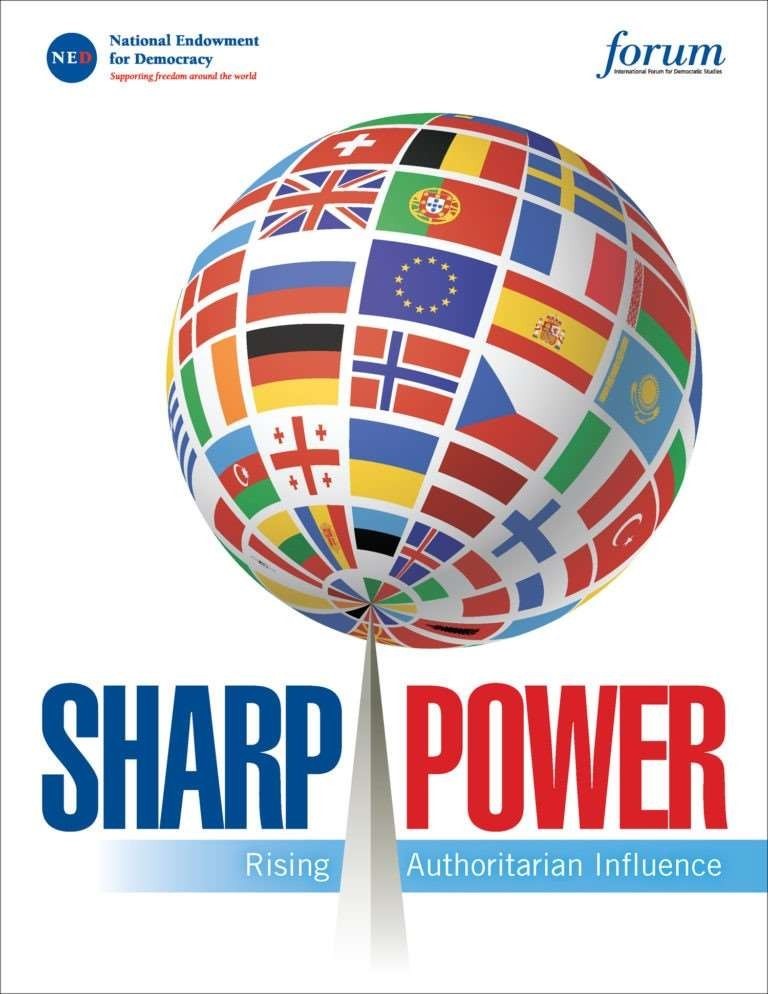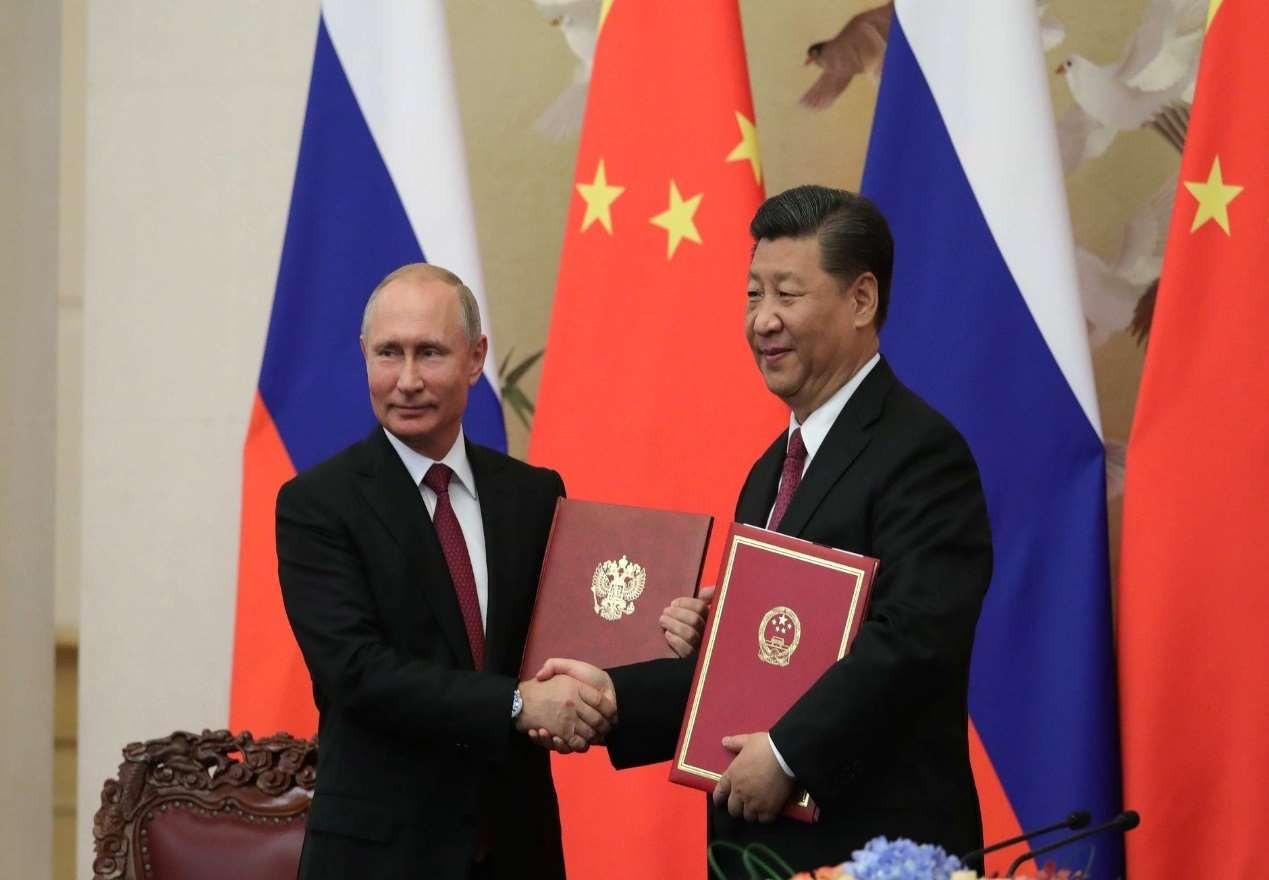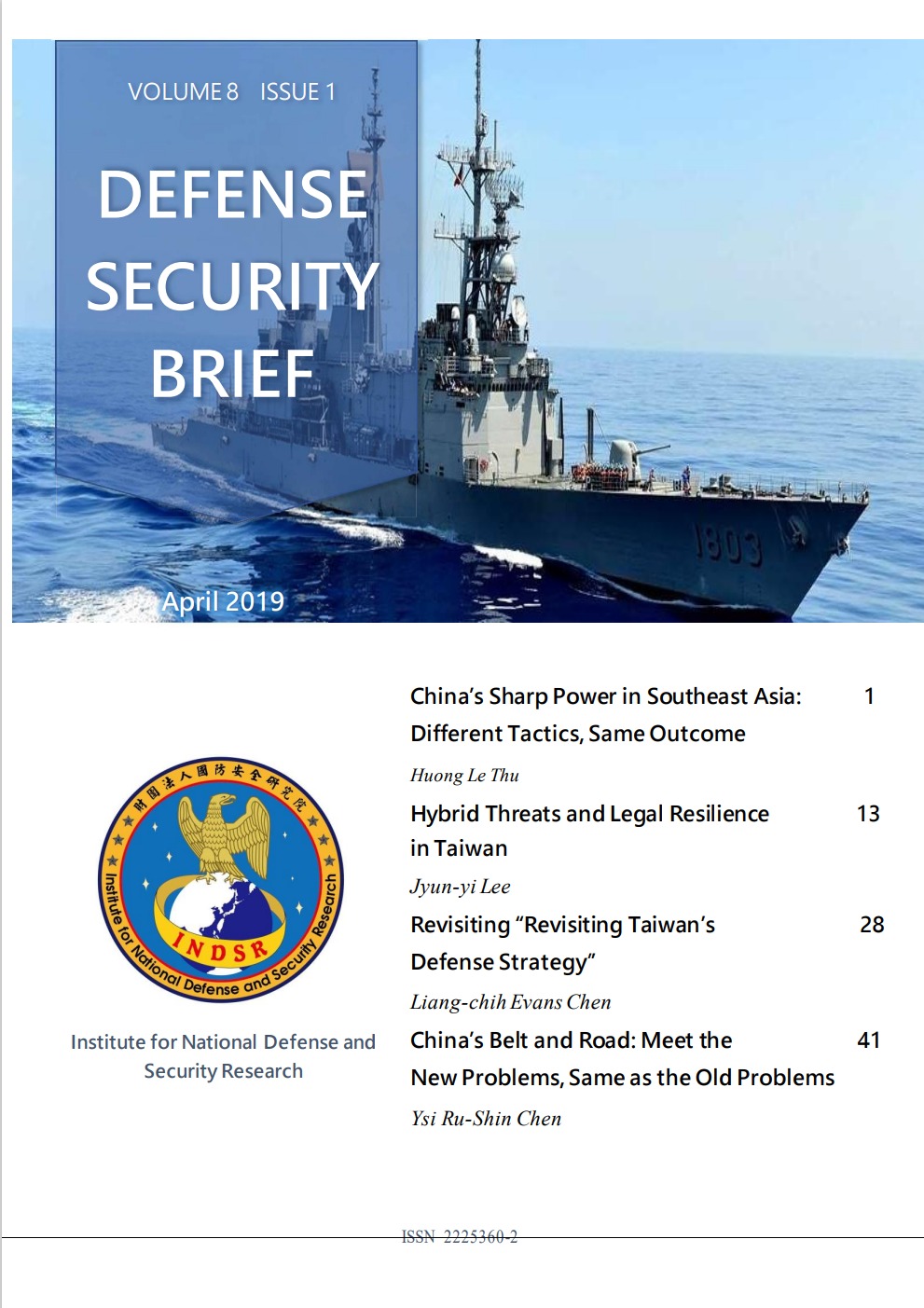China’s Sharp Power in Southeast Asia: Different Tactics, Same Outcome?
2019.04.15
Views
353
Introduction
In 2004, David Shambaugh wrote that “most nations in the region now see China as a good neighbour, a constructive partner, a careful listener, and a non-threatening regional power.” [1]Today, such assertion is highly contested. China appears now as an assertive, if not aggressive power, with not only regional, but more global ambitions. Today, there is much stronger conviction that China's leaders have become more open about their intention to use their growing military strength, new-found economic clout and expanding repertoire of “soft” and “sharp” power tools to try to reshape the existing Asian regional system and some aspects of the wider international order. [2]The image of a threatening, or capable of threatening power, is also much more prevalent. But this is, as this paper argues, not due only to its growing hard power capability. This paper explains how China developed its power and influence in its direct neighbourhood – Southeast Asia, where the interactions and practices of exerting power have been long in place. It argues that Beijing has mastered much more sophisticated and efficient form of power. And that, as this paper argues, requires new approaches to “categorization” of forms of power other than traditionally: hard, soft, sharp and smart.
This paper is divided in the following sections: it first explains the existing “categorization” of forms of power before explaining China’s frequently practiced strategy to practice power towards Southeast Asian neighbours individually, and then moves to explain the declining relevance of the Association of Southeast Asian Nations (ASEAN) – which aggravates the power gap between Southeast Asia and China, which adds to Beijing’s more advantageous position of “choosing” tools of influence. This paper concludes that China is increasingly more effective in exerting power, and it is more and more “cost-efficient,” as the need for “hard power” minimizes, and Southeast Asia grows ever more dependent on China. As such, the usual division of forms of power is no longer the precise way to explain the relationship between China and Southeast Asia.
What is sharp power?
The current debate about “sharp power” is centered around revisionist powers’ (primarily China and Russia) influence operations and is by no means detached from the US and its allies’ views on growing great power rivalry and the competition over different visions of international order and the power to assert one.
In the literature of power, there are four main “types” of categorization of the power: hard, soft, smart and sharp.
“Hard power” is probably the most explored in the field of security, war studies and international relations. It usually, in a nutshell, refers to the “hard” capacity to conquer, coerce and impose influence over others.
“Soft power”— a term championed by Joseph Nye, refers to the ability to affect others by attraction and persuasion rather than the hard power of coercion and payment—is sometimes used to describe any exercise of power that does not involve the use of force. But that is a mistake. Power sometimes depends on whose army or economy wins, but it can also depend on whose story wins.
“Sharp power” by its reliance on “subversion, bullying and pressure,” promotes self-censorship. Whereas soft power harnesses the allure of culture and values to augment a country’s strength, sharp power helps authoritarian regimes to compel behavior at home and manipulate opinion abroad.
This is an approach to international affairs that typically involves efforts at censorship, or the use of manipulation to sap the integrity of independent institutions. Sharp power has the effect of limiting free expression and distorting the political environment. As it is stated in the December 2017 report by the National Endowment for Democracy's International Forum for Democratic Studies that introduced the term, it is called "sharp" because it seeks to "pierce, penetrate, or perforate" the political and information environments of targeted countries. In other words, sharp power is a type of hard power. It manipulates information, which is intangible, but intangibility is not the distinguishing characteristic of soft power. Verbal threats, for example, are both intangible and coercive.[3]
Examples and forms of sharp power are mounting. Beijing has also scaled up their political interference in democracies, with Australia and New Zealand serving as testing grounds. Australia's authorities have mapped out an unprecedented effort by the Chinese Communist Party (CCP) to "infiltrate Australian political and foreign affairs circles, as well as to gain more influence over the nation's growing Chinese population." Similar intrusions have come to light in New Zealand, where CCP seeks to bring local elites under its sway, as well as to secure access to key resources and information. The outlines of such political interference are visible even further afield. In the Czech Republic, the opaque activities of CEFC China Energy offer a striking example of China's efforts to coopt local political elites, a particular threat in young and vulnerable democracies.
Beyond politics, the corrosive effects of sharp power are increasingly apparent in the spheres of culture, academia, media, and publishing— sectors that are crucial in determining how citizens of democracies understand the world around them. The assault of sharp power on both politics and the realm of ideas represents a critical threat to democratic systems.
Sharp power may be used to degrade the integrity of independent institutions through manipulation, as when Chinese entities acting on behalf of the communist party-state disguise their initiatives as commercial ventures or as grassroots civil society initiatives. As the International Forum report observes, the PRC's influence operations aim to discourage challenges to its preferred self-presentation, as well as to its positions or standing. More specifically, the party-state likes to paint China as a benign force in the world. In order to look more appealing in democratic societies, the communist regime is not above clothing itself in the vestments of soft power. State-funded research centers, media outlets, people-to-people exchange programs, and the network of Confucius Institutes mimic civil society initiatives that in democracies function “independently” of government. Meanwhile, local partners and others in democracies are often unaware of how tightly China controls social groups, media, and political discourse.[4]

Sharp Power: Rising Authoritarian Influence: a report published by the International Forum for Democratic Studies in 2017 probes how Beijing and Moscow influence democracies all over the world. (Source: National Endowment for Democracy)
Sharp power may also employ the nefarious arts of distraction. Russia has used such methods to exploit the open electoral and media sectors in a growing number of countries, including the United States. By manipulating the public conversation, it seeks to sharpen tensions within and between democracies. Finally, sharp power can also work via modern forms of censorship, by inducing media to engage in self-censorship or by employing digital tools such as "bots", automated accounts that spread false and divisive discourse online. Sharp power is part and parcel of the internationalist turn that authoritarian states have taken in recent years, and its effects are increasingly visible in the institutions critical to democracies' being able to function as free and self-governing societies.
The issue of “sharp power” is a growing concern among Western democracies, who see China’s practice of cover attempts to exert power within different layers of society, be it political elites, business or students’ associations.
The issue of “sharp power” is a growing concern among Western democracies,[5] who see China’s practice of cover attempts to exert power within different layers of society, be it political elites, business or students’ associations. Sharp power is inadvertently linked to “authoritarian regime” in most of the discussions in Western literature. More and more, China is listed in the company of Russia, Iran and North Korea – the regimes that projects influence in the neighbourhood and around the world through ideologies, manipulation, and disinformation, both domestically and abroad. The discussion is focused on using non-state “arms” of the power, including under the banner of “research institutes,” such as Confucius Institutes, think- tanks or university-related organizations, etc. [6] Often the debate involves recommendations about intelligence and counter-intelligence policies that will be able to respond to disruptive technologies frequently employed. Increasingly, there is a call for Western democracies to engage in “whole-of-government” approaches to respond to China’s political warfare.[7]
How does China’s sharp power apply to Southeast Asia?
China has had many, and often contradictory, images. To some, it is a “giving” power, to others – a source of strategic worry. More and more, it is both at the same time. What testifies to Beijing’s successful strategy is that despite growing concerns about China’s strategic intentions and its threatening perception, it still presents attractive economic alternative. The latter still, largely, overweighs the threat perception.
China’s modes of coercion are sophisticated – a combination of threat and inducement in the right proportions because repetitive coercion would invite consolidated response. Repetitive inducement, on the other hand, is costly and likely not to be efficient. The proportion of coercion and inducement also needs to be varied in applying to a larger group. If all feel coerced, and hence threatened, it is likely to invoke joint effort and unity against a larger coercer. The sense of inducement, on the other hand, is a more effective divider.
Various forms of exerting influence, whether defined as “sharp power” as above or not, has been present in neighbouring Southeast Asia for a long time. What is new is the intensity of this strategy paired with adopting new tools, including technology (some call it disruptive technology) which allows it to conduct alleged covert operations, if Beijing wishes to.
China applies simultaneously dual tactics of coercion and inducement to assert its position regionally and globally.
China applies simultaneously dual tactics of coercion and inducement to assert its position regionally and globally. In its direct neighbourhood – Southeast Asia – these practices are most evident in the region’s collective response (or lack of it) towards some key security issues. As a result, the confidence in ASEAN’s regional role and relevance are diminishing. The dual tactics combine the economic inducement through a variety of trade, infrastructure and investment projects with coercive action – be it threat of use of force or more diplomatic and psychological pressure.
Individually, Beijing’s current policy towards Southeast Asia in particular, but arguably also globally is to increase conditionality. A scenario that in the literature of coercion is closest to “blackmail.” Blackmail, however, is the most extreme iteration of it and is rarely used. The format that Beijing is using the same mechanism that “blackmail” would invoke avoids too drastic and risky outcomes. Instead, by constantly imposing the psychological effect of “choice,” Beijing is able to impose the desired effects on the Southeast Asian capitals. In other words, the scenario that CCP presents is simple: the positive relations, continuous economic ties, and stability will be assured if certain conditions that Beijing insists on are met. Those include, but not limited to, issues of the South China Sea disputes, reticence on Tibet and Xinjiang, adherence to the One-China policy, and more recently – stronger criticism towards Trump’s trade policy – all of the issues that China consider its core national interests. If those conditions are met, China’s neighbours can be assured of the resulting “benefits.” This can be called as a form of “conditional reassurance.”[8]
Coincidentally, ASEAN is decreasing in relevance in terms of regional institution. The sharp-power practices on the region as a whole is arguably more efficient because the changing nature of the relationship. In the 1990s, China was weaker, both economically and diplomatically. ASEAN as a bloc had a stronger diplomatic value and embarked on what was then called “socializing China.” ASEAN engaged China into regional processes and allowed China to interact with other global powers that were also taking part in ASEAN-led regionalism. While this “socializing process” [9] remained more complex than ASEAN would admit, the ASEAN framework presented a value for then “hiding and biding” Beijing. Fast forward, ASEAN’s importance in Beijing’s eyes has decreased. China’s diplomatic position today has far exceeded since and in Beijing there is a conviction now that “ASEAN needs China more than China needs ASEAN.”10 This places China in a more advantageous position and allows it to be even more aggressive in exerting its will upon the Southeast Asians and can lead the above-mentioned balance of coercion and inducement – more towards coercion.

Xi Jinping and Vladimir Putin signed bilateral documents following the consultations in Putin’s state visit to Beijing, June 8-10, 2018. (Source: Official Internet Resources of the President of Russia)
ASEAN’s confidence in its regional role and relevance are diminishing for a number of reasons. And the primary one is due to the association’s response to the rise of China. China’s growing power has conditioned increased volatility and militarization in the region. Particularly since 2012, China has shaken ASEAN’s confidence in multilateral and norms-based cooperation. China’s explicit disapproval of ASEAN’s dialogue mechanism in regard to the South China Sea disputes have affected ASEAN’s institutional confidence. The Chinese political leaders have regularly and openly expressed their preference of avoiding the South China Sea issues on the multilateral fora and instead suggesting bilateral dispute resolving mechanisms. Since 2012 particularly, there has been a noticeable change in the ASEAN diplomatic behavior increasingly towards accommodating Beijing’s preference. However, not only did it fail to resolve the disputes, but it has further accentuated internal divide within ASEAN. Incoherent responses to the regional security matters have cost ASEAN its reputation and self-confidence. This has in turn led to ASEAN’s crisis of relevance.
The growing power gap between Southeast Asia and China, gives Beijing more confidence which means that the smaller neighbours are more prone to China’s power and influence in any form, be it hard, sharp, soft or smart. In other words, Beijing has increasingly greater liberty of choosing which tactics it applies, and results are more likely than in the past to be effective.
Conclusion
The first pillar of success of Beijing’s strategy is that despite the existing resistance towards China’s power and influence in the region, they are often outweighed by the perceived benefits of economic potential from positive relations with China, which often requires giving in to Beijing’s preference. The second pillar of Beijing’s success is that it has managed to prevent an effective collective balancing by exploiting the differences between the Southeast Asians’ national interests. The economic interdependence is a strong card that will in the long run further cement the imperatives for positive relations with China in most capitals in Southeast Asia. As such, China’s sharp power in Southeast Asia is dissimilar to the forms of intrusion, interference and influence operations it conducts in Western democracies. This is because of the difference between the nature of Southeast Asian societies and Western democracies. And hence, the way to penetrate them varies. While Beijing recognizes that and alternates its strategies towards a variety of polities, the results, however, can be seen as similar. The ultimate goal, after all, of sharp power, is to gain access to manipulate decisions, political moods and influence in any society. While China’s sharp power in Southeast Asia looks different from its form in liberal democracies, the end-effect is similar – that is, giving Beijing avenues to control those societies.
Dr. Huong Le Thu is a Senior Analyst in the Defense and Strategy Program of the Australian Strategic Policy Institute.
[1] David Shambaugh, “China Engages Asia: Reshaping the Regional Order,” International Security, Vol. 29, No. 3 (2004/2005), p. 64.
[2] Aaron Friedberg, “Competing with China,” The Survival, Vol. 60, No. 3 (2018), pp. 7-63.
[3] Joseph Nye, “China’s Hard and Soft Power,” The Strategist, 8 January 2018.
[4] Christopher Walker, “What Is ‘Sharp Power’?” Journal of Democracy, Vol. 29, No. 3 (2018), pp. 8-10.
[5] “Sunlight vs. Subversion: What to Do about China’s ‘Sharp Power’,” The Economist, Retrieved December 14, 2017, from https://www.economist.com/leaders/2017/12/14/what-to-do-about-chinas-sharp- power
[6] Christopher Walker, Shanthi Kalathil, & Jessica Ludwig, “Forget Hearts and Minds,” Foreign Policy, Retrieved September 14, 2018, from https://foreignpolicy.com/2018/09/14/forget-hearts-and-minds-sharp-power/
[7] Linda Robinson, Todd C. Helmus, Raphael S. Cohen, Alireza Nader, Andrew Radin, Madeline Magnuson, Katya Migacheva, “Modern Political Warfare: Current Practices and Possible Responses,” Rand Corporation, Retrieved 2018, from https://www.rand.org/content/dam/rand/pubs/research_reports/RR1700/RR1772/RA ND_RR1772.pdf
[8] For more analysis see: Huong Le Thu, “China’s Dual Strategy of Coercion and Inducement towards ASEAN,” The Pacific Review, Vol. 32, Iss. 1 (2019), pp. 20-36.
[9] Alice Ba, “Who Is Socializing Whom? Complex Engagement in Sino-ASEAN Relations,” The Pacific Review, Vol. 19, Iss. 2 (2006), pp. 157-179.
[10] Feng Zhang, “Is Southeast Asia Really Balancing against China?” The Washington Quarterly, Vol. 41, No. 3 (2018), pp. 191-204.

